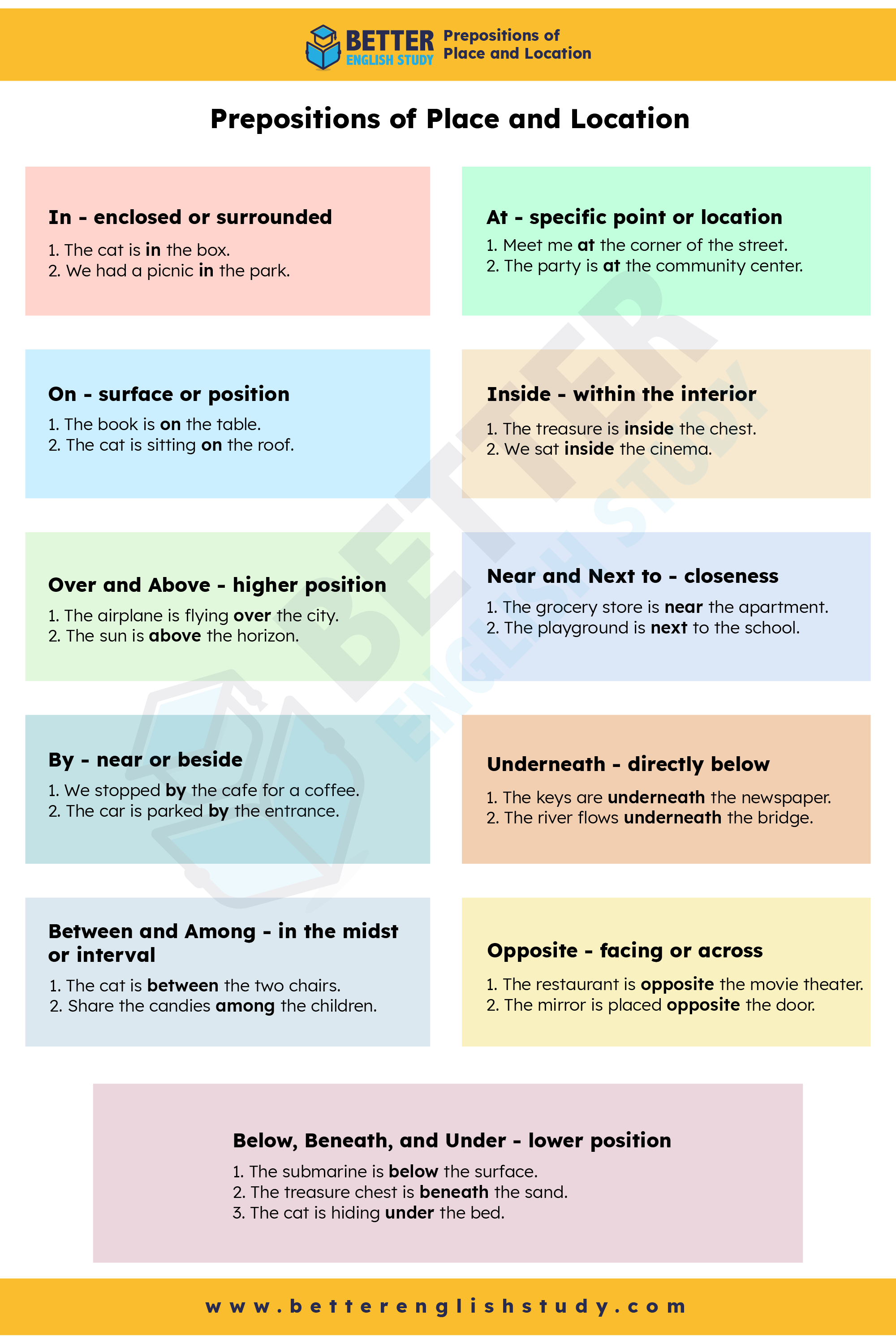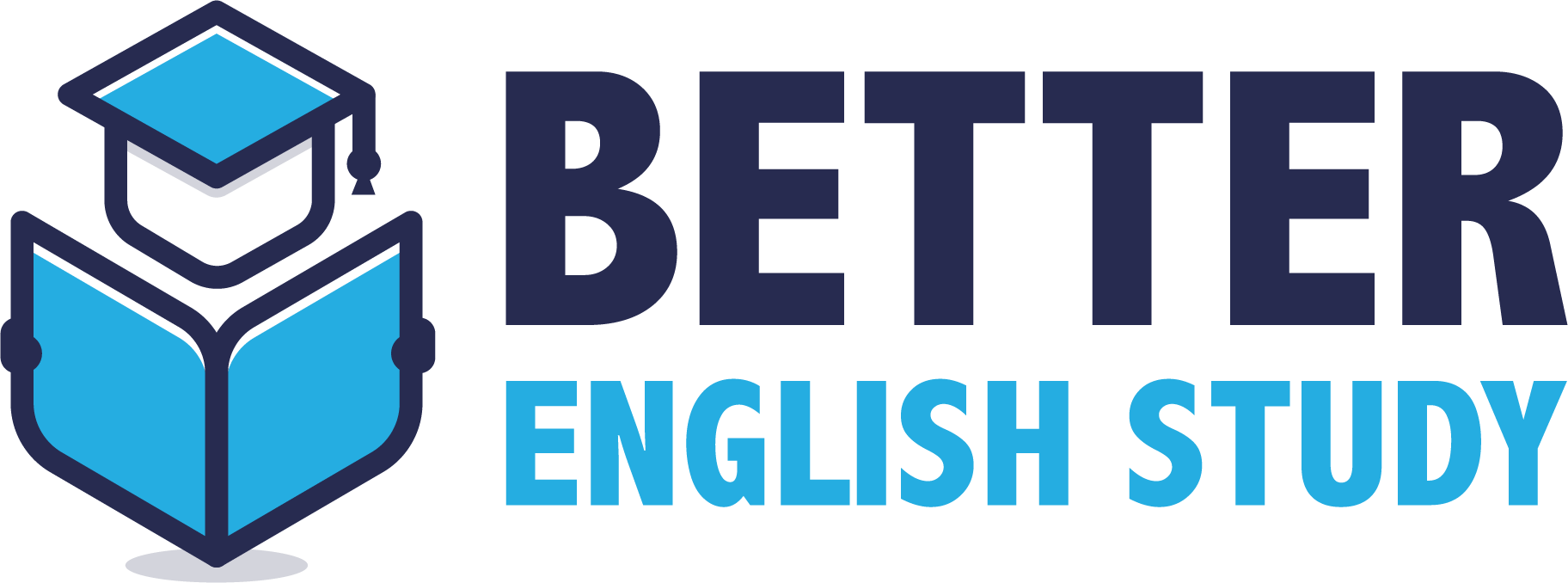
Understanding prepositions of place or location is crucial for effective communication, as they help convey the spatial relationships between objects and locations.
In this article, we will explore the usage of common prepositions such as “in,” “at,” “on,” “inside,” “over,” “above,” “below,” “beneath,” “under,” “underneath,” “by,” “near,” “next to,” “between,” “among,” and “opposite,” providing clarity on which preposition should use before place and when to use each.
In – enclosed or surrounded
The preposition “in” is used to denote being inside or surrounded by something.
Example sentences:
- The cat is in the box.
- We had a picnic in the park.
At – specific point or location
The preposition “at” is employed to pinpoint a specific point or location.
Example sentences:
- Meet me at the corner of the street.
- The party is at the community center.
On – surface or position
The preposition “on” is used to describe being on a surface or in a specific position.
Example sentences:
- The book is on the table.
- The cat is sitting on the roof.
Inside – within the interior
The preposition “inside” specifies a location within the interior of an object or space.
Example sentences:
- The treasure is inside the chest.
- We sat inside the cinema.
Over and Above – higher position
The prepositions “over” and “above” indicate a higher position in relation to something.
Example sentences:
- The airplane is flying over the city.
- The sun is above the horizon.
Below, Beneath, and Under – lower position
The prepositions “below,” “beneath,” and “under” signify a lower position in relation to something.
Example sentences:
- The submarine is below the surface.
- The treasure chest is beneath the sand.
- The cat is hiding under the bed.

Underneath – directly below
The preposition “underneath” emphasizes a position directly below something.
Example sentences:
- The keys are underneath the newspaper.
- The river flows underneath the bridge.
By – near or beside
The preposition “by” denotes proximity or being near to something.
Example sentences:
- We stopped by the cafe for a coffee.
- The car is parked by the entrance.
Near and Next to – closeness
The prepositions “near” and “next to” convey proximity or closeness to a location.
Example sentences:
- The grocery store is near the apartment.
- The playground is next to the school.
Between and Among – in the midst or interval
The prepositions “between” and “among” describe relationships in the midst of or within an interval.
Example sentences:
- The cat is between the two chairs.
- Share the candies among the children.
Opposite – facing or across
- The preposition “opposite” is used to describe a position facing or across from something.
Example sentences:
- The restaurant is opposite the movie theater.
- The mirror is placed opposite the door.
Mastering prepositions of place is essential for effective communication, enabling us to articulate spatial relationships precisely.
Whether describing positions “in,” “at,” or “on,” indicating interior locations with “inside,” specifying heights with “over” and “above,” denoting lower positions with “below,” “beneath,” and “under,” or highlighting proximity with “by,” “near,” and “next to,” these prepositions enrich our language and enhance our ability to convey spatial information accurately.
